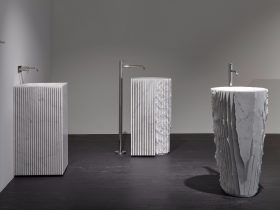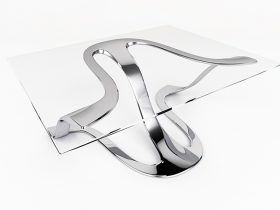Hopper Bench – the many faces of a seemingly simple design by Dirk Wynants
When designing Hopper, Dirk Wynants started from the concept of a long picnic table, but made it more comfortable by adding four pass through zones and by bevelling the tabletop edge. But how do you translate the same basic concept into a piece of outdoor furniture for public or small spaces? Well, you simply invent Hopper Bench…
Diagonal legs, a slanted tabletop edge, taut outlines… the resemblance is striking. Hopper Bench is indisputably Hopper’s ‘half-brother’. Except that it is mainly suited for small outdoor spaces or for pubs and restaurants that prefer several smaller tables. But Hopper Bench is first and foremost the tool par excellence to beautify streets and squares. The repetition of its strong lines will create a powerful architectural statement in any public space!
Highly versatile
In streets and squares, in gardens or on balconies, positioned against an outside or a garden wall: Hopper Bench fits any location. It also offers great versatility: Its two pass through zones make it easy to get in and out of the bench. The thick tabletop with its slanted edge is an ideal backrest if you want to sit facing the other way. And if you want to sit a bit higher, you can simply sit on its tabletop.
Facts & figures
Hopper Bench is 68 cm wide, which is half the width of a Hopper table.
If used as a freestanding bench, it must be anchored to the ground; if positioned against a wall, ground anchoring is not necessary.
The materials used are FSC labelled hardwood (Iroko), galvanised steel for the frame and the legs, which are also available in powder coated aluminium.
The corrosion resistance of the galvanised version makes it ideally suited for public spaces.































Leave a Reply